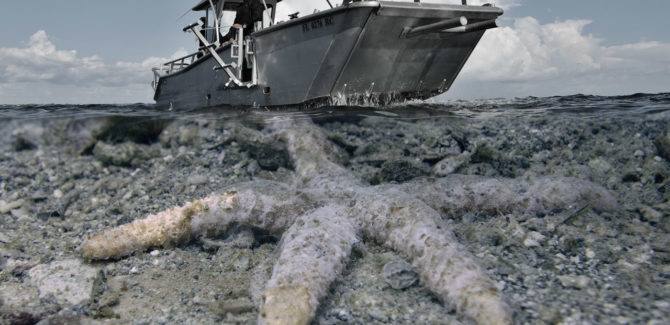We recently posted a video showing underwater observations while diving offshore southwest Florida in late September. The region has been subjected to a long term and wide spread "Red Tide" or "Harmful Algae bloom" event that is causing devastation to marine life. Our findings were unsettling, over 30 miles offshore we observed a seafloor covered with dead invertebrates. Ironically however, we did find some life closer to shore. This video shows more details from our dive expedition, including the near shore reef where we found living fish and invertebrates.
It is very concerning to see the invertebrates wiped out. As scientist Katie Laakkonen describes in the video above, the invertebrates were likely killed by a low oxygen event from a mass die off of Red Tide dinoflagellates. Red Tide toxins generally affect vertebrate animals, causing the fish kill events we are familiar with. However the toxin produced by the Red Tide is not thought to directly harm invertebrate organisms.
Red Tide is often referred to as a "natural event" in which the environment recovers from. However, historical concentrations of Red Tide were lower and invertebrate organisms may not have been destroyed in mass like we are observing today. This means that the fish that were able to swim away and return to areas affected by Red Tide, may not have the resources needed to survive today.
The publication below describes how Red Tide concentrations increased almost 20 times by the early 2000's trending with population growth and additional nutrients in the water. It is scary to think what would be found if a similar study was performed today considering population increases and human activities since the early 2000's.
Historic Red Tide concentration study and findings:
https://www.ncbi.nlm.nih.gov/pmc/articles/PMC2330169/
Video captured and produced by Joe Kistel


